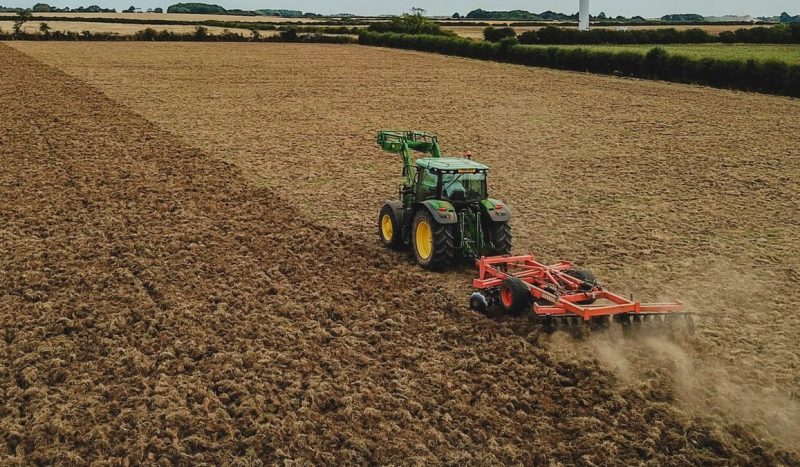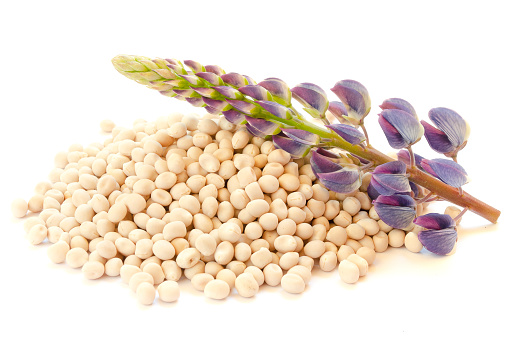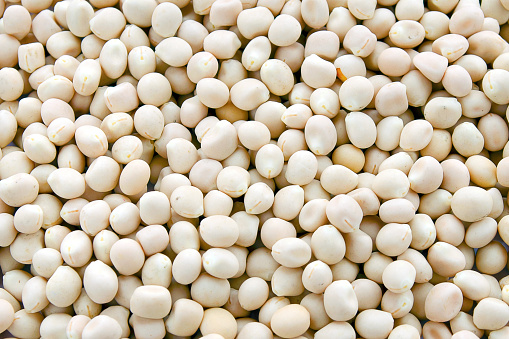Lupine, information about crop management
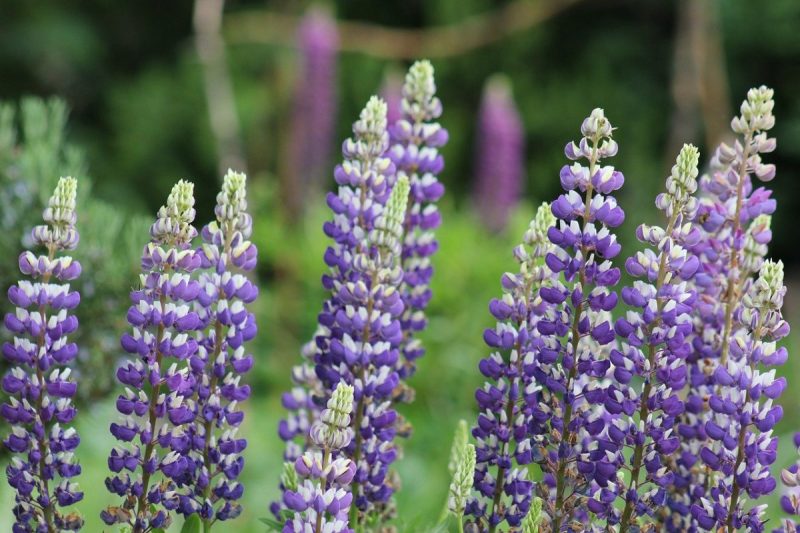
Lupine is known as a fodder plant and it is used as a green fertilizer. The seeds, on the other hand, have a more limited use because they contain alkaloids. Thus, they are used in animal feed only after removing the bitter taste, through different procedures. The ”sweet” forms can be used without risk in animal feed as concentrated fodder.
Sweet lupine grains can be used to make flour, boiled or fried grains, oil, protein, etc
Lupine can be used as a green fertilizer for light soils with low nitrogen and calcium. Lupine has annual species (white, yellow, and blue) and perennial.
BOTANICAL CHARACTERISTICS
Lupine shows an epigenetic sprouting. After emergence, it presents the “rosette” stage, which is shorter for the white variety (two weeks), a little longer for the blue variety (3 weeks), and about 5 weeks for the yellow variety.
The root is type I and penetrates the soil to a depth of up to 180 cm (yellow), and 200 cm (white), but over 50% of the roots can be found in the 0-20 cm layer.
The stem is 60-150 cm high for the white variety, 50-120 cm for the yellow and blue variety and it is cylindrical-fistulous, with terminal growth.
The leaves are palmately compound and have 5-9 oblong-oval leaflets in white lupin, lat-lanceolate in yellow lupin, and linearly lanceolate in blue lupin.
The flowers are ivory-white or bluish in white lupine and are arranged in terminal racemes. In yellow lupin the flowers are golden-yellow and in blue lupin, they have different colours (blue, pink, purple). Pollination is autogamous in white and blue lupins and largely allogamous in white and perennial lupins.
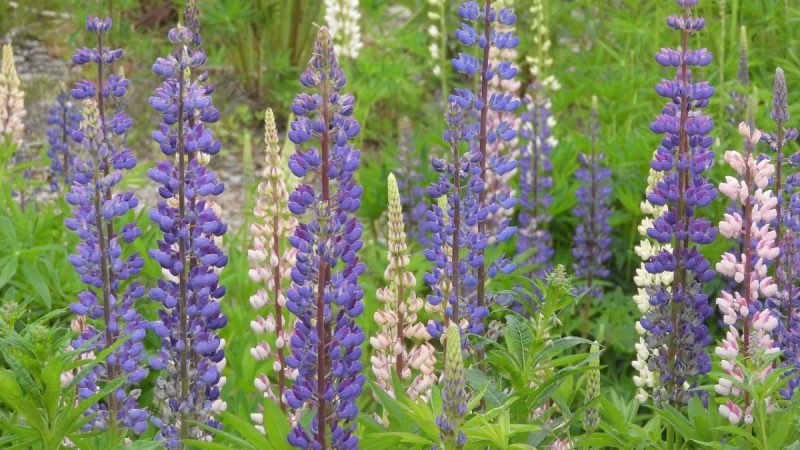
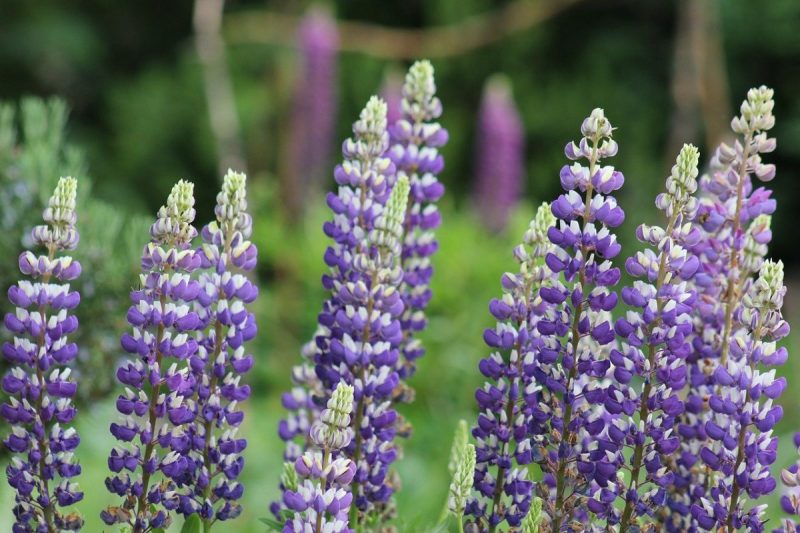
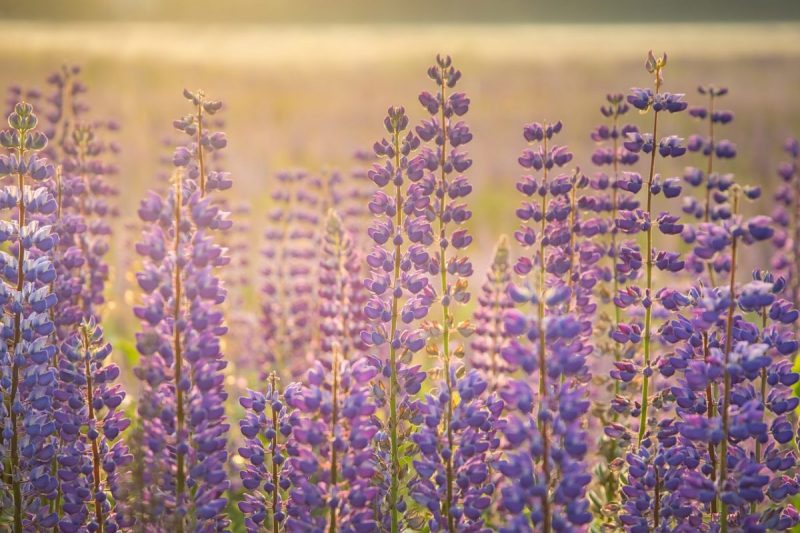
The pods are yellow, straight, with 4-8 seeds, indehiscent in white lupin, dark brown, with 4-5 seeds and dehiscent in yellow lupin; brown, straight with 4-7 seeds in blue lupin.
The seeds are white with pink spots, in white lupine, marbled on a whitish background, in yellow lupine, marbled on a dark background, in blue lupine, and marbled brown, in perennial lupine.
CLIMATE AND SOIL REQUIREMENTS
Temperature
Temperature requirements are moderate, being slightly higher for white lupins than for yellow and blue lupins. In the seedling stage, it can withstand frosts of -2 °C – -5 °C, the blue lupine being more resistant. At maturity, the white lupine tolerates -6 °C, the yellow lupine -7 °C , the blue lupine -9 °C, and the perennial types even more. The sum of degrees is 1800-1900 °C for blue lupine and higher for white lupine.
Humidity
Lupine is generally drought-resistant. Less resistant is blue lupin, the most resistant being yellow lupin. White lupin needs a warm, wet spring, then it resists drought well.
Light
Annual species are long-day, and white lupins react less to day length than yellow and blue lupins.
Soil
Soil requirements are relatively low, growing well on acidic and sandy soils.
CULTIVATION TECHNOLOGY
Crop rotation
It can be cultivated for several years on the same soil and has no special requirements regarding the previous crop. Avoid planting this plant after legumes or itself.
Fertilizing
You can apply specific fertilizers, and the doses must be determined after soil agrochemical analysis.
Recommended products
-
You can find products on a different store
Change Store -
You can find products on a different store
Change Store -
You can find products on a different store
Change Store -
You can find products on a different store
Change Store -
You can find products on a different store
Change Store -
You can find products on a different store
Change Store -
You can find products on a different store
Change Store -
You can find products on a different store
Change Store -
You can find products on a different store
Change Store -
You can find products on a different store
Change Store -
You can find products on a different store
Change Store -
You can find products on a different store
Change Store -
You can find products on a different store
Change Store -
You can find products on a different store
Change Store -
You can find products on a different store
Change Store -
You can find products on a different store
Change Store -
You can find products on a different store
Change Store -
You can find products on a different store
Change Store -
You can find products on a different store
Change Store -
You can find products on a different store
Change Store -
You can find products on a different store
Change Store -
You can find products on a different store
Change Store -
You can find products on a different store
Change Store -
You can find products on a different store
Change Store
SOIL WORKS
They are carried out immediately after the previous crop was removed from the land. Stubble tillage shreds weeds, vegetable remains, and the surface soil layer.
Ploughing should be done as soon as possible, at a depth of 25-30 cm. In spring, the soil should be ploughed as early as possible, only after the water has drained away to avoid excessive soil compaction. Soil tillage must be adapted according to the previous crop.
Seeds and sowing
The seed must have a purity of 96% and germination of over 80%. Considering the high-water requirements and lower temperature requirements (3-4 °C), sowing is recommended to be done in early spring. As a second crop, more precisely in stubble, it must be sown immediately after harvesting the previous crop.
The density at sowing, for seed production, is 50-60 grains/m2 (white lupine), 70-80 grains/m2 (yellow and blue lupine), and 150 grains/m2 for perennial lupine. The sowing distance depends on the purpose of the crop, as well as the maintenance method.
Sowing depth is 3-4 cm for annual species on loamy soils, 5-6 cm on lighter soils, and about 2 cm for perennial lupin.
The quantity of seed per hectare in case of the mentioned densities for seed production is: 200-240 kg/ha for white lupin, 130-160 kg/ha for blue lupin, 100-130 kg/ha for yellow lupin, 20-40 kg for perennial lupin, and green mass production (green manure or fodder), the quantities should increase by 25-30%.
CARE WORKS
The care work consists of destroying the soil crust with a harrow, with a rotary hoe, before sunrise and until the plants are 8-10 cm tall, to fight the emerging weeds. Chemical control is done by applying specific herbicides.
Recommended products
-
You can find products on a different store
Change Store -
You can find products on a different store
Change Store -
You can find products on a different store
Change Store -
You can find products on a different store
Change Store -
You can find products on a different store
Change Store -
You can find products on a different store
Change Store -
You can find products on a different store
Change Store -
You can find products on a different store
Change Store -
You can find products on a different store
Change Store -
You can find products on a different store
Change Store -
You can find products on a different store
Change Store -
You can find products on a different store
Change Store -
You can find products on a different store
Change Store -
You can find products on a different store
Change Store -
You can find products on a different store
Change Store -
You can find products on a different store
Change Store -
You can find products on a different store
Change Store -
You can find products on a different store
Change Store -
You can find products on a different store
Change Store -
You can find products on a different store
Change Store -
You can find products on a different store
Change Store -
You can find products on a different store
Change Store -
You can find products on a different store
Change Store -
You can find products on a different store
Change Store
HARVESTING
As with other legumes, lupin ripening is uneven. Harvesting takes place when the main stalk’s racemes reach maturity. It can be done in two stages ( harvested and after 4-6 days threshed) or directly with the combine. With white lupine, the risk of seed loss is minimal (the pods being indehiscent), but greater attention must be paid to yellow lupine because the pods are dehiscent at maturity.
For green manure, lupin should be incorporated into the soil as soon as the pods are formed, after cutting it with the combine harvester or after rolling. The second crop (in stubble), should be incorporated when the first frost arrives, if spring crops will follow after it.















































































































































































































































































































































































































































